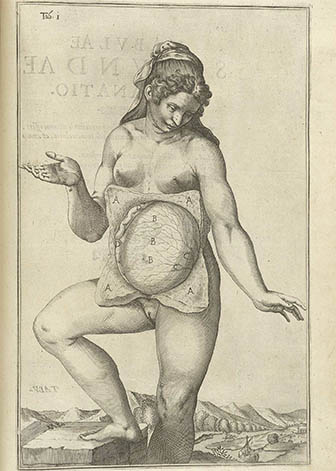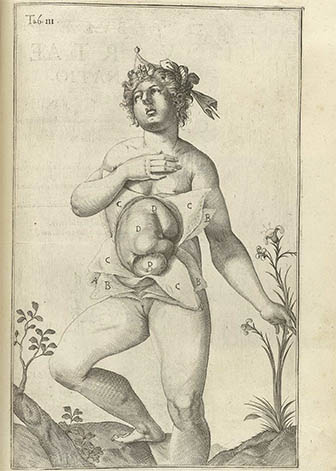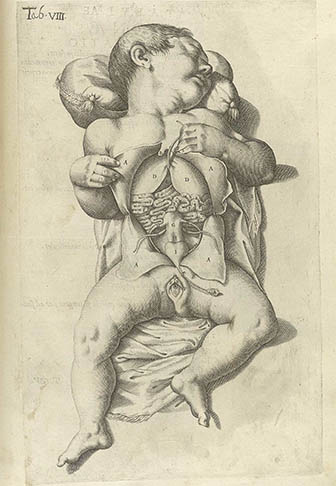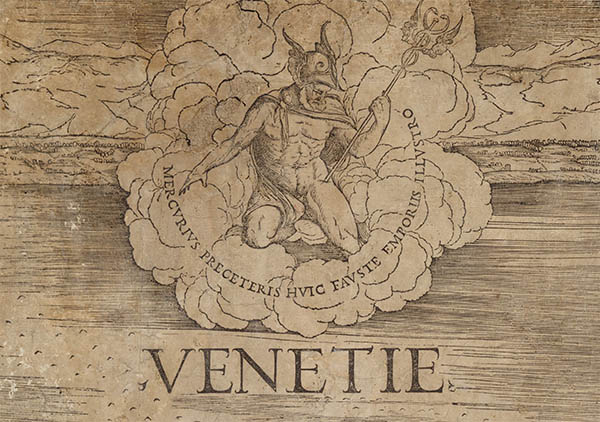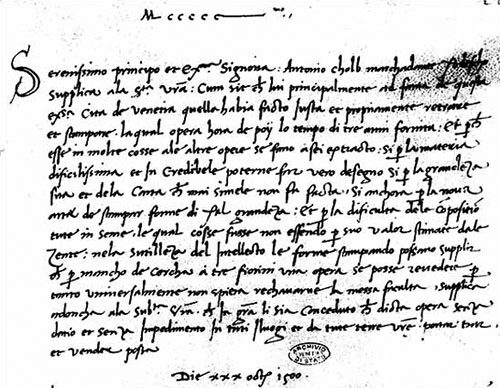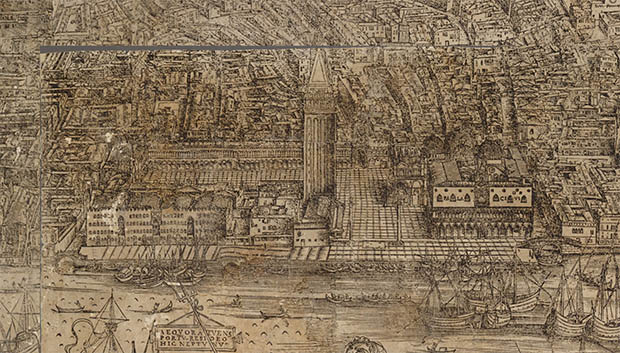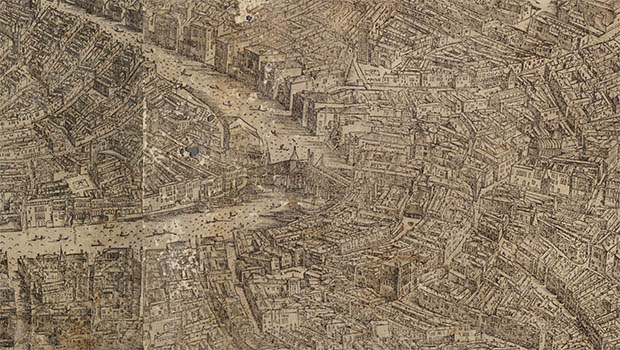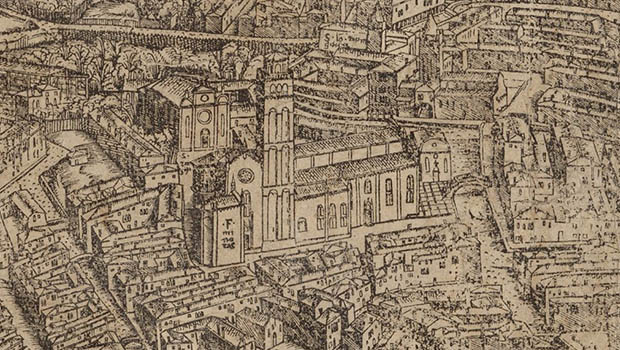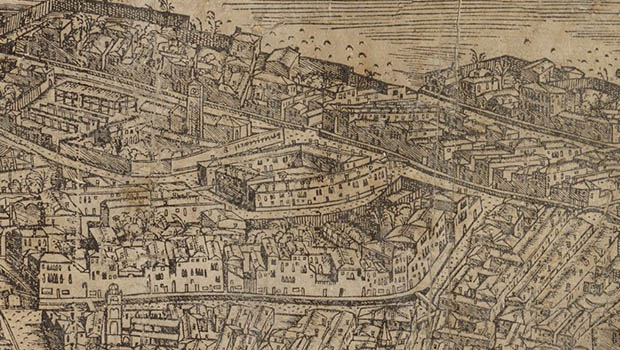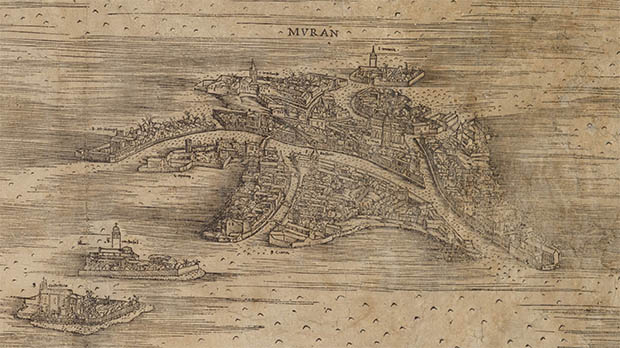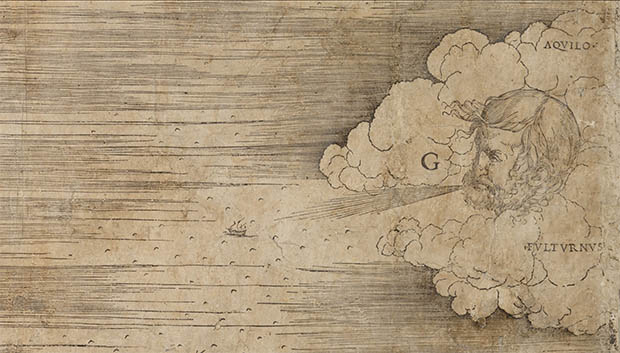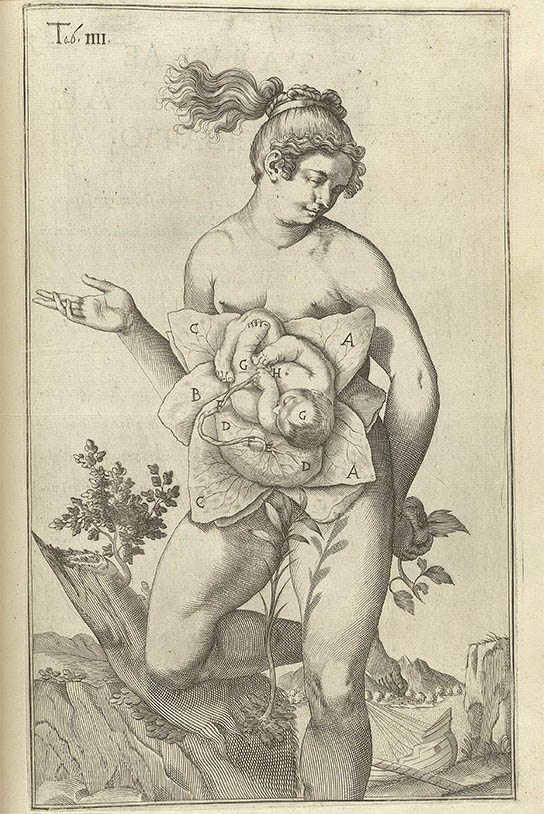
Here is a copperplate engraving from De formato foetu liber singularis, commissioned by the Paduan anatomist Casserius. It shows a classic renaissance Venus filleted lotus-like to reveal her child. The plate, as well as some 95 others, represent the high point of
Paudan/Venetian anatomical illustration and were published in three
separate titles after Casserius’ untimely death.
Julius Casserius (AKA Giulio Caeesrio, Giulius Casseri, or Casserii Placentini) was born ca.1556 or ca.1561 in Piancenza, Italy. Casserius’ father died when he was young and, being nearly destitute, he entered the houshold of the noted Paduan Anatomist, Girolamo Fabrizi d’Acquapendente (AKA Fabricus). After showing extraordinary initiative, the master took it on himself to teach Casserius anatomy. Casserius went from family servant to auditor to surgical disciple.
Casserius enrolled in the Università Artista and studied under both Fabricus and Gerolamo Mercuriale (Mercurialis). After his graduation, ca.1580, he acted as Fabricus’ preprator, university surgical examiner, as well as a physician and surgeon.
But there would soon be trouble in Padua. In 1595 Casserius became a substitute for Fabricus and his lectures were a bit too enthusiastically received for Fabricus’ taste. The old master, enraged with jealousy, banned Casserius from giving private lectures through an old statutory rule. According to the records it would be nearly eight years until Casserius lectured again.
During this time Casserius began to publish his first works on anatomy: De vocis auditusque organis Historia anatomica was published in 1601 and Pentaestheion in 1609. After these books he began writing the text and compiling the drawings for a comprehensive atlas of anatomy.
Back to the rivalry: In 1613, after 50 years of public lectureship, Fabricus was permitted to scale back his teaching, and his replacement, against his wishes was, of course, Casserius. In 1616 Casserius began his first and only public anatomy lecture. Shortly after the three week course he caught a fever and died on 8 Mar 1613. His master and nemesis, Fabricus, would survive him by three years.
After Casserius’ death his commissioned plates, via his heirs, ended up with Adriaan van der Spieghel (Spigelius), who had succeeded both Casserius and Fabricus as professor of Anatomy and Surgery. Spigelius intended to use the plates in his own anatomy atlas, but died an untimely death in 1625.
Here is where all the bibliographic fun begins. After Spigelius’ death, his son in law, Liberale Crema, edited one of his manuscripts and illustrated it with nine of Casserius’ plates. The book, De formato foetu liber singularis, published in 1626, was perhaps the first OB-Gyn classic. A year later, Jan Rindfleisch (AKA Bucretius) edited Spigelus’ unfinished altas and illustrated it with Casserius’ plates. In 1627 he also published 95 of the plates with his own annotations, as Tabulae Anatomicae. Some time later the Tabulae and De formato foetu were published as a single volume.
Here are some plates that appeared in both Spigelius’ Fabrica and Casserius’Tabulae:
Julius Casserius (AKA Giulio Caeesrio, Giulius Casseri, or Casserii Placentini) was born ca.1556 or ca.1561 in Piancenza, Italy. Casserius’ father died when he was young and, being nearly destitute, he entered the houshold of the noted Paduan Anatomist, Girolamo Fabrizi d’Acquapendente (AKA Fabricus). After showing extraordinary initiative, the master took it on himself to teach Casserius anatomy. Casserius went from family servant to auditor to surgical disciple.
Casserius enrolled in the Università Artista and studied under both Fabricus and Gerolamo Mercuriale (Mercurialis). After his graduation, ca.1580, he acted as Fabricus’ preprator, university surgical examiner, as well as a physician and surgeon.
But there would soon be trouble in Padua. In 1595 Casserius became a substitute for Fabricus and his lectures were a bit too enthusiastically received for Fabricus’ taste. The old master, enraged with jealousy, banned Casserius from giving private lectures through an old statutory rule. According to the records it would be nearly eight years until Casserius lectured again.
During this time Casserius began to publish his first works on anatomy: De vocis auditusque organis Historia anatomica was published in 1601 and Pentaestheion in 1609. After these books he began writing the text and compiling the drawings for a comprehensive atlas of anatomy.
Back to the rivalry: In 1613, after 50 years of public lectureship, Fabricus was permitted to scale back his teaching, and his replacement, against his wishes was, of course, Casserius. In 1616 Casserius began his first and only public anatomy lecture. Shortly after the three week course he caught a fever and died on 8 Mar 1613. His master and nemesis, Fabricus, would survive him by three years.
After Casserius’ death his commissioned plates, via his heirs, ended up with Adriaan van der Spieghel (Spigelius), who had succeeded both Casserius and Fabricus as professor of Anatomy and Surgery. Spigelius intended to use the plates in his own anatomy atlas, but died an untimely death in 1625.
Here is where all the bibliographic fun begins. After Spigelius’ death, his son in law, Liberale Crema, edited one of his manuscripts and illustrated it with nine of Casserius’ plates. The book, De formato foetu liber singularis, published in 1626, was perhaps the first OB-Gyn classic. A year later, Jan Rindfleisch (AKA Bucretius) edited Spigelus’ unfinished altas and illustrated it with Casserius’ plates. In 1627 he also published 95 of the plates with his own annotations, as Tabulae Anatomicae. Some time later the Tabulae and De formato foetu were published as a single volume.
Here are some plates that appeared in both Spigelius’ Fabrica and Casserius’Tabulae:
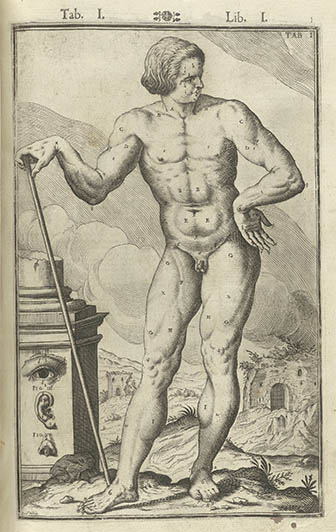
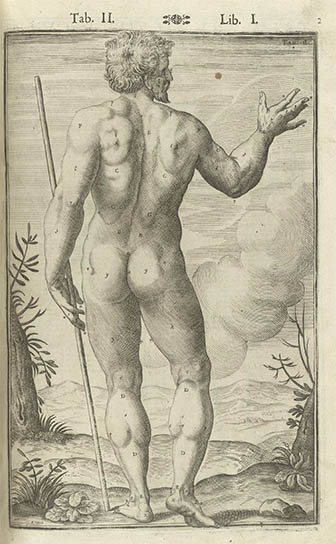
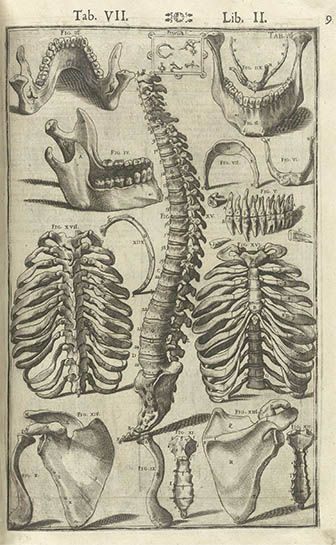
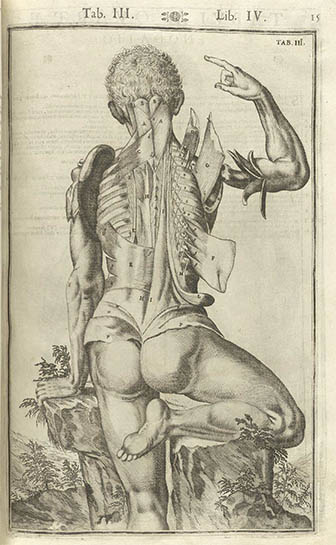
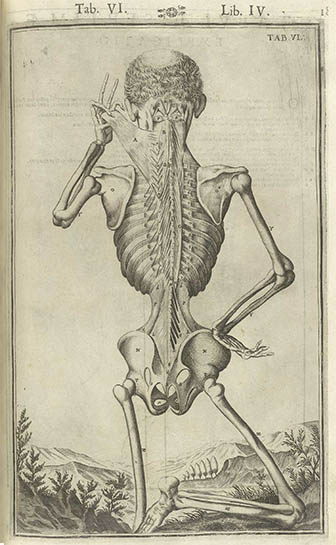
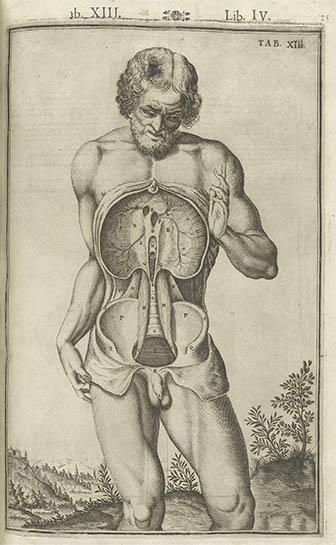
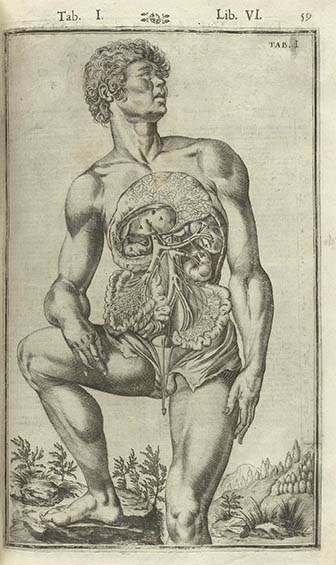
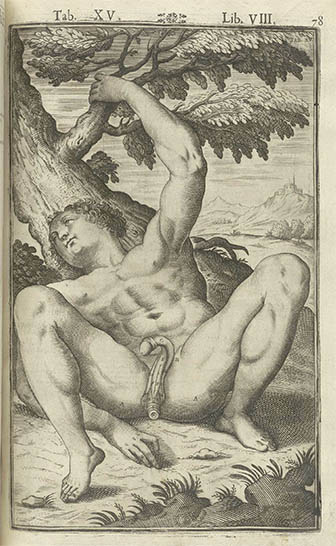
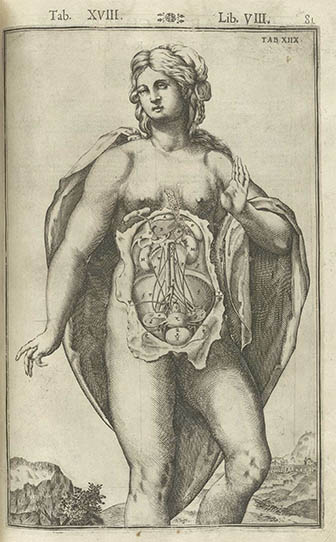
Since Vesalius’ de Fabrica,
the Paduan anatomists relied on the artists of Venice and Casserius was
no exception.
His plates were drawn by the Venetian painter and print-maker Odoardo Fialetti (AKA Edoardus Fialettus), who studied under Tintoretto,
and the engravings were prepared by Francesco Valesio (Franciscus
Vallesius).
If Vesalius’ illustrations were the model for the woodblock then Casserius’ illustrations were the model for copperplate. It would be nearly 80 years before better anatomical illustrations were published and Casserius’ work would be plagiarized well into the 18th century.
Here are few more plates from De formato foetu:
If Vesalius’ illustrations were the model for the woodblock then Casserius’ illustrations were the model for copperplate. It would be nearly 80 years before better anatomical illustrations were published and Casserius’ work would be plagiarized well into the 18th century.
Here are few more plates from De formato foetu:
